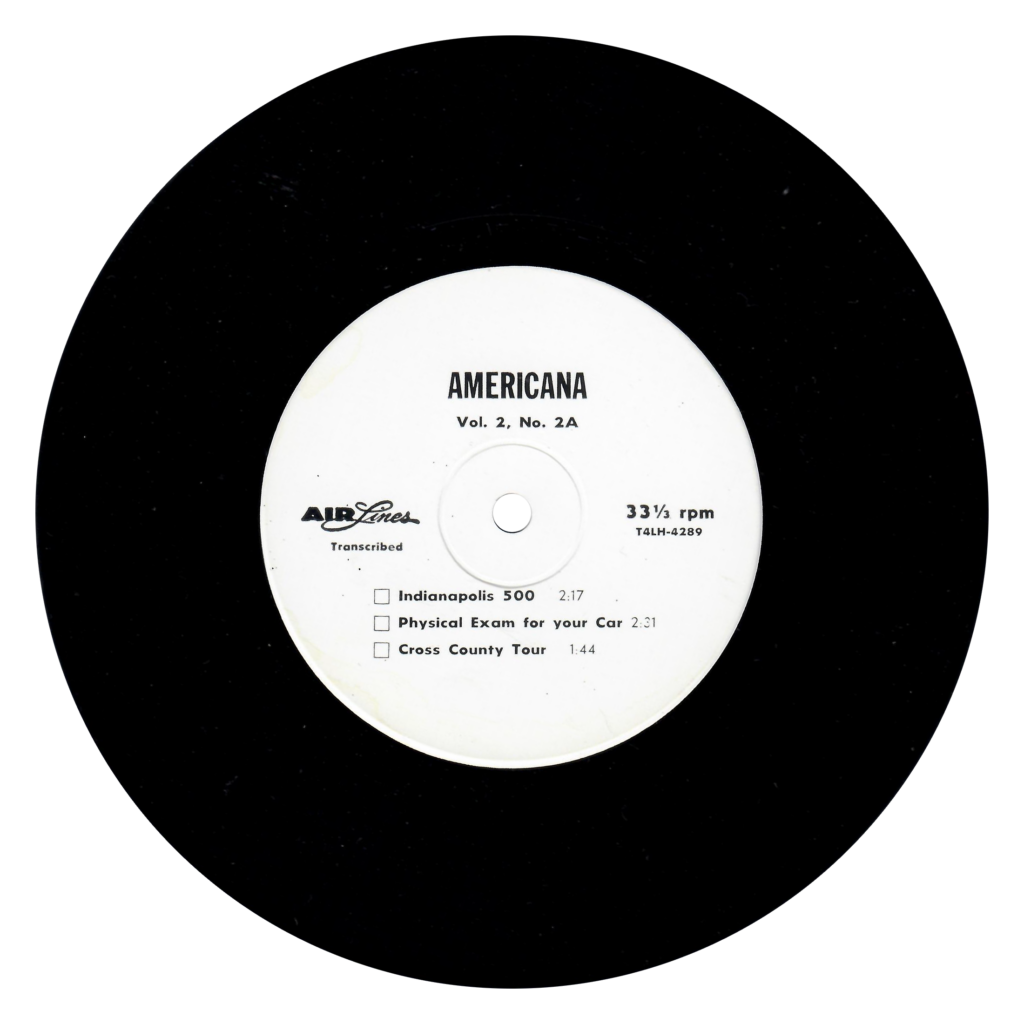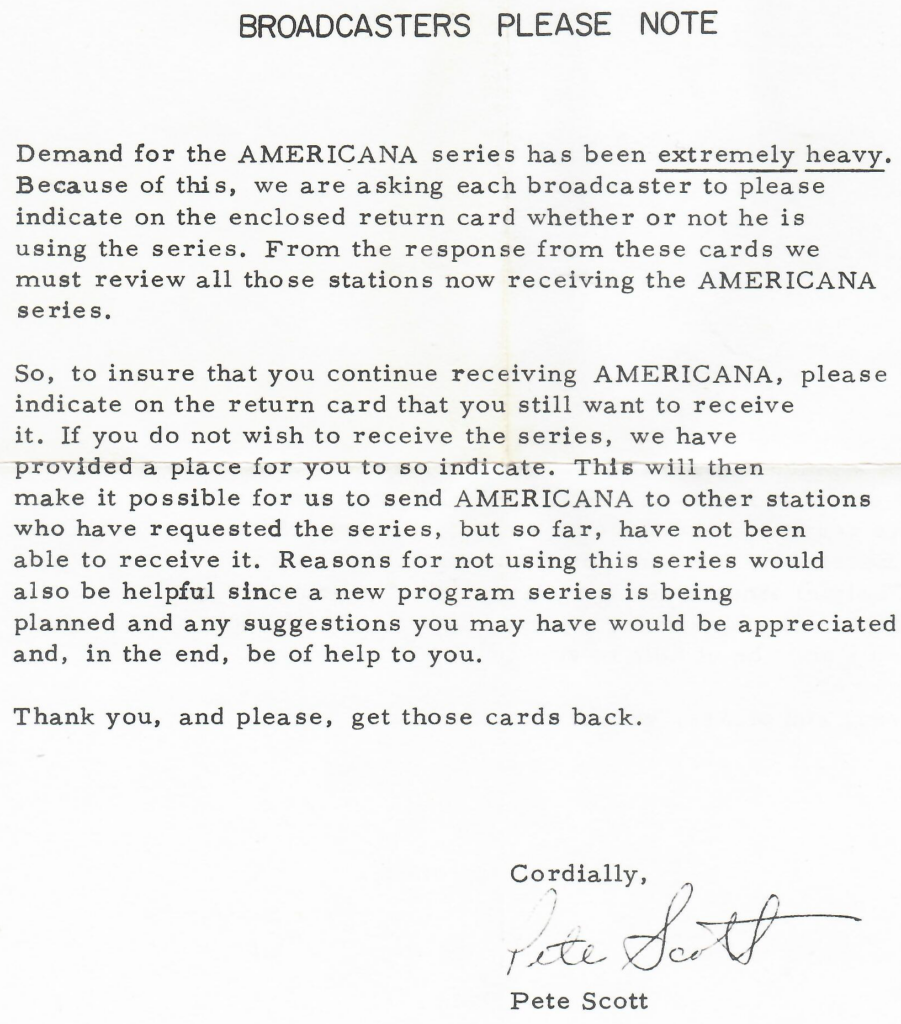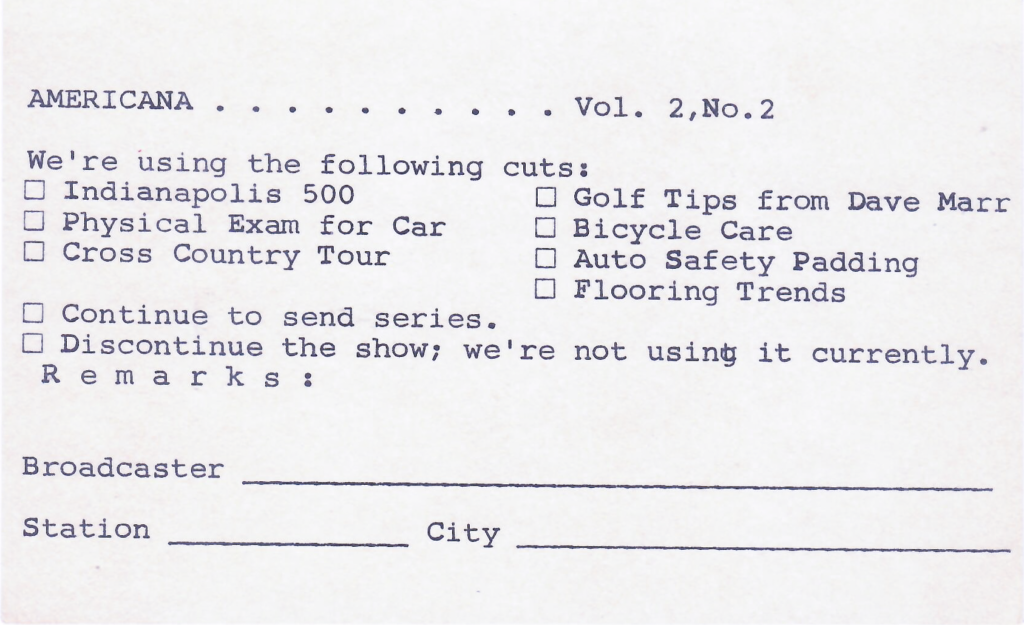Welcome to Finnley’s Audio Adventures! I’m always on the lookout for the most unusual and offbeat records to explore. Recently, I came across a record from 1966 called “Americana” by AIRLines, and I was intrigued. As someone who loves all things related to aviation and airplanes, I was hoping that this record would have something to do with the airline industry. However, as I dove deeper into the record, I realized that it was just a series of advertorials for Goodyear, a tire and rubber company.

The record starts with a report on the Indianapolis 500, including an interview with A.J. Foyt, who was injured during the first lap of the race. The Indianapolis 500 was sponsored by Goodyear, and the race played a significant role in Goodyear’s marketing strategy at the time.
The record also includes an interview with Andy Favalon from Goodyear, who talks about the importance of getting your car inspected before a road trip. This segment highlights the potential dangers of driving with contaminated gasoline and lubricants from winter months.
The next segment features a promotional piece about a tire test, where two overloaded station wagons were driven by three professional test drivers to determine the safety of new car tires. The drivers were Bob Clemens, JD Martin, and Garland Gaines from the San Angelo Proving Grounds of Goodyear, and they drove nearly 12,000 miles crisscrossing the continent in every conceivable condition.
If you’re a golfer, don’t worry, they’ve got you covered too. There’s an interview with Dave Marr, Player of the Year 1965, who talks about the Goodyear Golf and Country Club and offers tips on how to improve your game. This segment shows how Goodyear was promoting a particular lifestyle and not just its products.
The record also includes some safety tips for bicycling and an interview with Russel Bial, manager of foam products development for Goodyear, about padded dashboards and other automotive safety features. Padded dashboards were a new safety feature at the time, and this segment provides insights into their development and the importance of foam padding technology in protecting car occupants from harm.
But perhaps the most surprising part of this record is the segment on spring cleaning and redecorating, featuring Yale Forman, a flooring stylist for Goodyear. Yes, you read that right, a flooring stylist. Forman discusses new trends in flooring and suggests that m’ladies (yes, they use that term on the record) should look for clearer and brighter colors, more texture, and greater dimension of pattern. This segment shows how Goodyear was not just promoting its products, but also keeping up with cultural trends and promoting a certain lifestyle. It’s a reminder that companies often use advertising not just to sell their products, but also to shape consumers’ perceptions of what’s fashionable and desirable.

Included with the record was a letter from Pete Scott asking each broadcaster to indicate on the return card whether they were using the “Americana” series, which makes it sound like the record was sent unsolicited to radio stations. However, the letter also tries to play up the popularity of the series by suggesting that not wishing to receive it would make it possible for stations who have requested it but have not been able to receive it due to demand to finally receive it. The return card included with the record listed “Americana Vol. 2, No. 2” and provided checkboxes for which cuts the station was using in their broadcast, as well as a spot to indicate whether they wished to continue receiving the series or discontinue it. The card also provided a space for remarks, the broadcaster’s name, station, and city.

Despite my initial disappointment that the record did not feature any aviation-related content, I found it to be a fascinating glimpse into the advertising tactics of Goodyear in 1966. As I delved deeper into the record and its accompanying materials, I became curious about the origins of “AIRLines” and the “Americana” series. However, my searches for more information on these topics did not yield any results. Searching archives for that address did not return any information about “AIRLines” or “Americana.” Instead, I discovered that the address belonged to Landseas Products Corp, which dealt with electronics such as oscilloscopes, and the GALE AGENCY INC, which managed groups including The Ink Spots, during the time period. Nonetheless, I remained intrigued by the “Americana” series and even considered filling out the return card to request more volumes to feature here on Finnley’s Audio Adventures.
